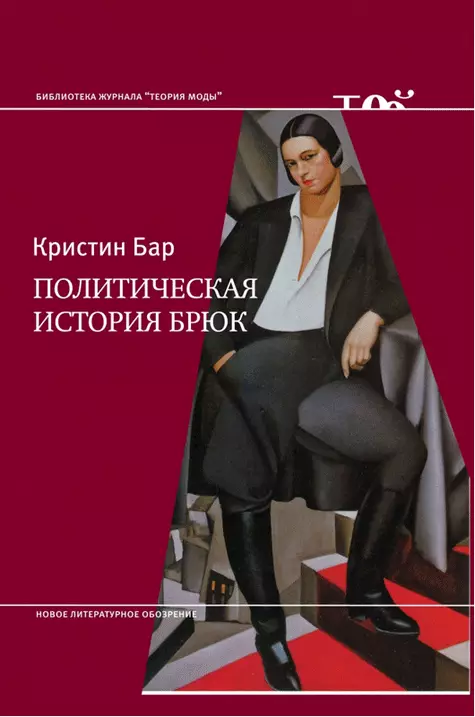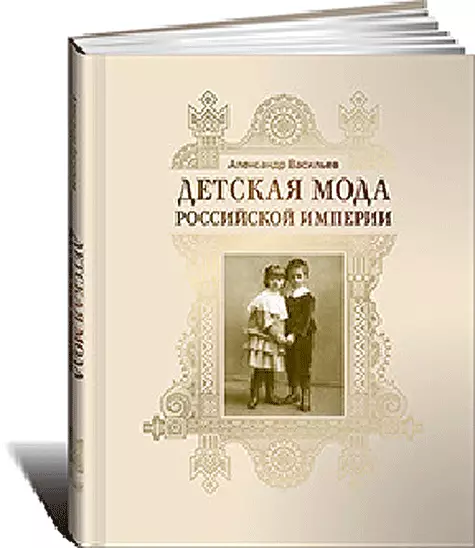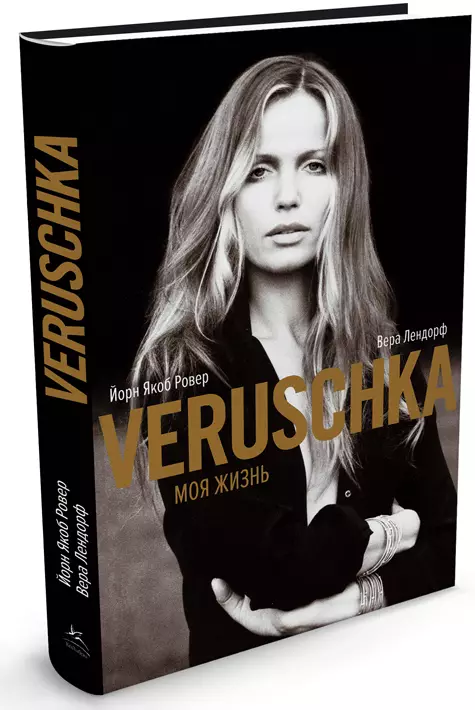In the world of fashion theory is terriblely separated from practice. And it's not just that fashionable delight of world-famous designers is an art for the sake of art, and their bizarre collections "from Kutuur" to household life most of the population of the planet are not applicable in any way. The fact is that we are glad to watch fashionable shows, we eat pizza under a defile on TV, leafy glossy magazines, in which the boundaries between advertising and useful information have long been dissolved ... We obediently absorb the mass of information on how to dress with taste, which is combined, And what - by no one that is laid in the history of our clothes and where the legs grow from the trousers.
But, even knowing all this, we go to the store, and there these knowledge in our brain is disconnected with a ring click! And we again wear a sweater in a flower with a pants in a cell. And again, it seems to us that bright blue, bright green and bright red - the most fashionable combination of colors in clothes ... and that fashion means that all people around wear the same thing.
Books about fashion seek to bring the practice to the theory.

"Great Male Failure"
Political Story Trousers / Christine Bar; per. With Franz. S. Petrova. - M.: New Literary Review, 2013.
Pants are not Hukhry-Mukhra. Very (even too) Scientific historian, writer Christine Bar will reveal to us such intricate swirls of the history of trousers, which will unwitting this detail of the wardrobe more value than before.
Winged phrase in the topic:
"... The shop" Male, Dame and Children's dress "was placed under a huge sign, which occupied the entire two-storey house. On the sign, dozens of figures were namalians: yellow-beetroot men with thin mustaches, in fur coats with twisted outwards, ladies with couplings in hand, short-eaten children in sailor suites, Komsomologians in red shocks and dusk-bodies, immersed in the hips in felt boots.
All this magnificence broke about a small piece of paper, stripped to the store's entrance door:
No pants
- Fu, as rude, - said Ostap, entering, - it is immediately clear that the province. Wrote, as they write in Moscow: "Pants No", decent and noble. Citizens are satisfied with diverge to homes. "
It is quite clear that the story of the trousers in itself is the history of the struggle at first men for convenience, then - women for gender equality. It is interesting to be told in the book: the choice of a man in favor of the trousers - it was the "great male refusal." "A man refused complaints about beauty. He set itself the only goal - utilitarianism. " Pure True: Once the middleless men's costumes changed to black uniformity, while the ladies still long ago dressed in Pelinka, silk, feathers, velvet, thin erotic fabrics ... This refusal - a tradition that takes place to this day: a man proudly pulls a gluable sweater and says : "The main thing is that it was convenient."
A woman traditionally could wear pants only in one case - when she deliberately refused his own gender. A certain shock causes a reminder that even in the Bible it is written: "There should be no men's clothing on a woman, and a man should not dress in a women's dress, for the grinding before the Lord God who makes this" (De. 22: 5).
War of people of both sexes for the right to wear trousers has always had a political character. Her peripetia we read in the book. What to say, if back in 1954, in an enlightened Europe, a woman who came to court in trousers after changing at the factory, refused to listen!
And finally, a useful quotation from a book, which, if case it can be shred when you have to fight for your rights. The artist Rosa Bonor, speaking of trousers, believed "this suit is quite natural, since nature gave two legs to all human beings, regardless of gender."

Children like fashion mirror
Children's Fashion of the Russian Empire / Alexander Vasilyeva. M.: Alpina Publisher, 2013.
"All parents, and especially mothers, concerns the problem of raising children, develop their taste, national self-identification, behavior, education, and internal culture. Then you will rather open this book! It is possible when you read it and carefully consider all photos, you will have less questions. " Better than the fashion historian himself Alexander Vasilyev, hardly someone will define the promise of this book - "Children's Fashion of the Russian Empire." This folio is worth a fairly arrogant money - almost 2000 rubles on average, but this purchase will come in handy many times - you, your children, your guests, friends, then and grandchildren ... The edition is more like a photo album than a book: a unique collection of photos of girls and boys who have passed centuries. Alexander Vasiliev traced the history of children's fashion from the mid-19th century to 1917 - from the beginning of the development of photography at the end of an excellent era, by revolution. When you look these frames from the point of view of the costume, the outfits really amazed: what is thought out, it turned out, a suit is decorated.
For example, in the 1860 girls and boys up to five years old dressed about the same - in the dress and skirts. By the way, mention of boys in night shirts or dresses we will find in abundance and in classical literature. Every decade was fashionable to wear children in white. Girls, like adult women, was decently to wear crinolines, and a classic suit for the boy - "Breton Weston - a jacket from velvet or drape, which was worn with a vest and pantaluckers for his knee." More boys dressed in Russian national costumes, spots, shirts, Circassians - and no protest it did, because there was no standard and aspirations, as today, to American fashion.
"Judging by numerous photographs, the cost of the nobility, urban bourgeoisie and meshness was high in Russia. All children look happy, satisfy and well-groomed; Their hair is trimmed, curled and stuck, clothes and stockings are clean and shoes in good condition. I am sure that the Fashion of the past taught children of accuracy, care for its elevated clothing, respect for the manual work of the embroiderers and the Kozhevnik, the dressmakers and shoes that created children's clothing. "

Fashion named Vera
Verushka: My life / Vera Lendorf; Per. with it. E. Menikova. - M.: Hummingbird, ABC-Attikus, 2013.
Telecenselas on the life of the Soviet mannequins can convince anyone who looks at: difficult to fate the model in the USSR. But finally, we have the history of the model, which from Russian one is only the name - faith. Vera Lendorf. Today, she is already a grandmother in age - just in age, profession (or character?) Did not allow her to have children or grandchildren. But once she was the successor Marilyn Monroe after a star departing; Once she was supermodel (and still hates this word); Once, in the 60s and 1970s, it could be seen on the cover of Vogue, in the pictures of popular photographers dressed, for example, to the collection from Yves Saint Laurent ... Once it was the personification of fashion. But how hard it was, it can be seen in her autobiography.
The phrases of Vera Lendorf Women would have to record themselves as manifestos, as the best of Mantra: "In childhood and a teenager, I considered myself ugly - until I decided to become a beauty." High (too leaning!), With a 43rd foot size, with too "naive" face, blonde (repaint!) ...
Reading the book, you see, what obstacles are terrible, shameful, unbearable - just do not meet on our way ... To success, I wanted to say. No, not necessarily success. Just - on the way. When faith, 22-year-old, offered to play in advertising spray for hair, she was happy! "I wrote my mother about how I am glad, as proud, now I will earn real money, and not a laughing fee" Vogue ". On the appointed day I was nervous. He went to the studio, put the make-up, made a hairstyle, but from the excitement turned the can with a spray with the wrong side and splashed into his eyes. And everything was gone: the makeup was spoiled, the eye blushed. Helmut came to horror and enraged: "Lord, you're such a fool!" Then I called the agency and said: "She is too stupid! Well, just too stupid! Send me someone else! "I had to leave: I did not cope with the work. It was shock. "
And she decided to become a beloved - took a decrease in the Russian language. Create an image. Become dislike others. To photographers, once saw it, remembered forever. Permanent tension, every minute work on itself, and more even psychological than physical. And although this work gave the result, she stopped taking care of money and let the success, her internal conflict with himself and with the world only increased. Her autobiography is the story of overcoming under fashion spotlights. After all, in the world of fashion there is such a law: "When the light turns on, the presentation begins - it ends, as soon as the light goes out, and reality again declares its rights."
